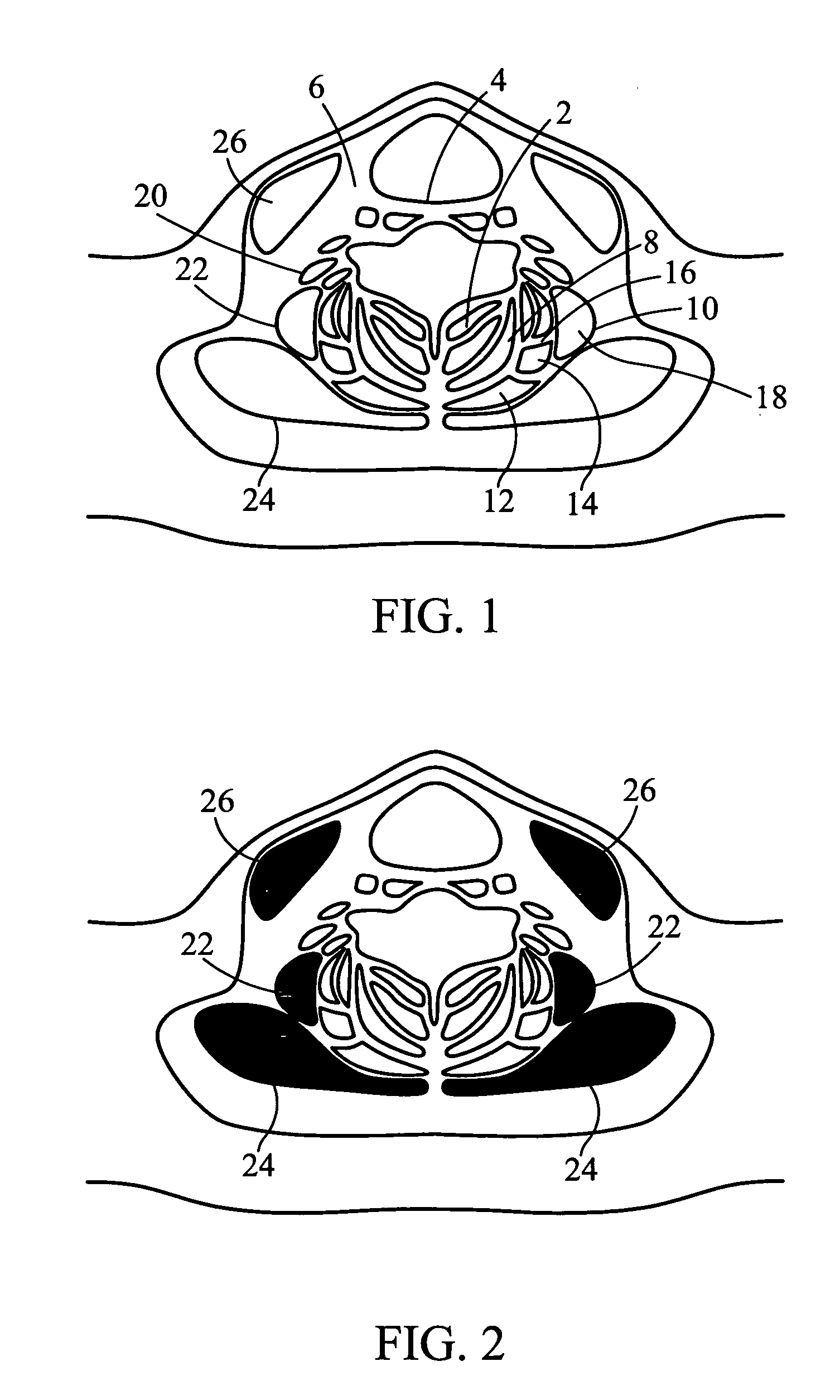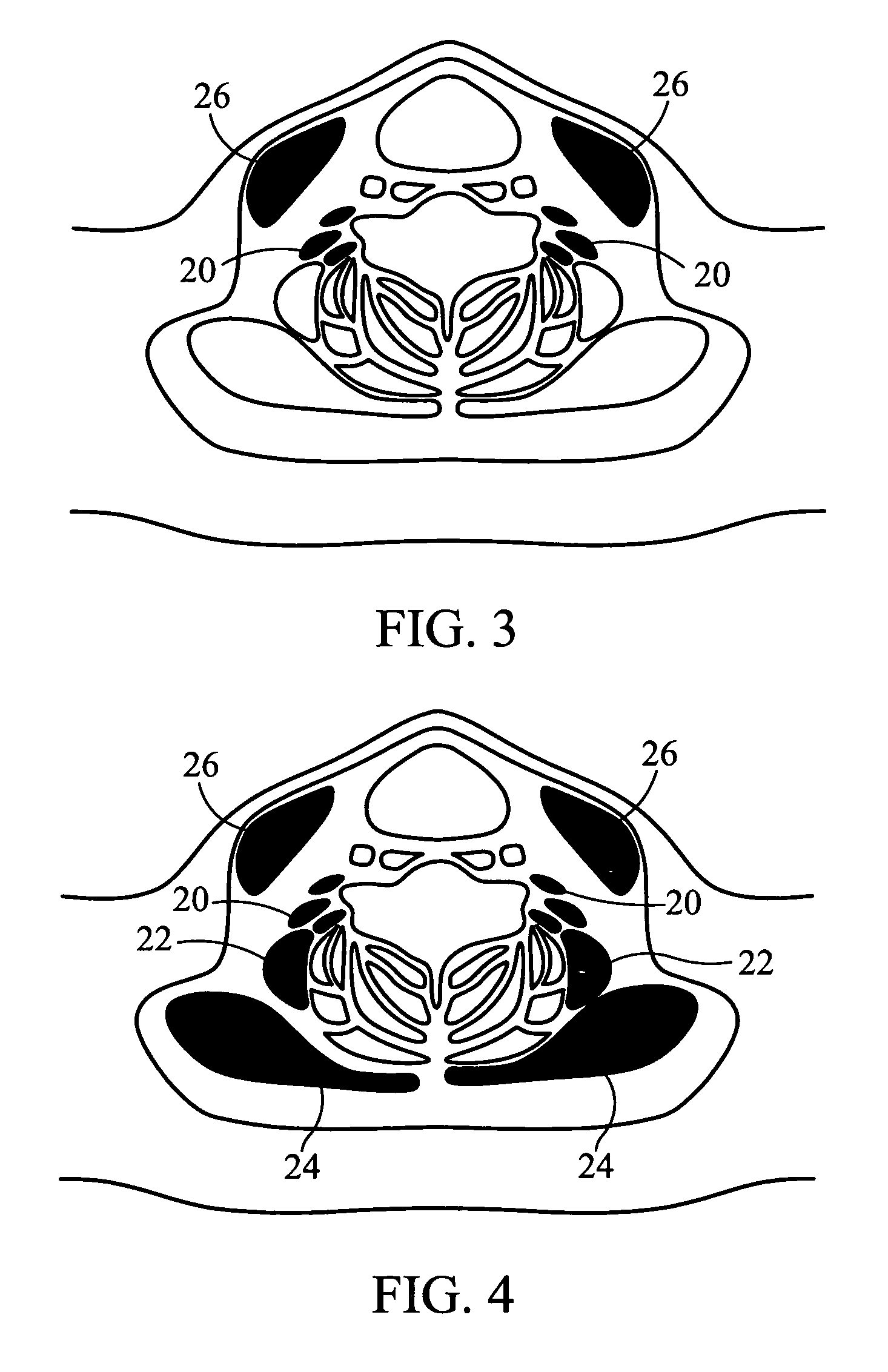Methods and systems for rehabiliting and retraining of the neck musclature
a neck musculature and neck musculature technology, applied in the field of neck musculature rehabilitation and retraining, can solve the problems of destabilizing the neck, affecting the function of the neck, and overpowering and weakening the underlying core stabilizer muscles, so as to avoid the subject of the spine and the effect of low effective spring constan
- Summary
- Abstract
- Description
- Claims
- Application Information
AI Technical Summary
Benefits of technology
Problems solved by technology
Method used
Image
Examples
Embodiment Construction
[0101] The present invention provides methods and systems for exercising the head, neck and back muscles as well as the upper thoracic spine. It is to be expressly understood that the descriptive embodiments set forth herein are intended for explanatory purposes and is not intended to unduly limit the scope of the present inventions. Other embodiments and applications not described herein are considered to be within the scope of the invention. It is also to be expressly understood that while specific embodiments for the components of the system are discussed, other equivalents to these embodiments that perform substantially similar functions are within the scope of the claimed inventions.
[0102] The method of a preferred embodiment of the present invention utilizes as an operative principle the use of the inhibitory reflex or reciprocal inhibition. As used in the present invention and as defined in this application, the inhibitory reflex occurs naturally and serves to relax a muscle...
PUM
 Login to View More
Login to View More Abstract
Description
Claims
Application Information
 Login to View More
Login to View More - R&D
- Intellectual Property
- Life Sciences
- Materials
- Tech Scout
- Unparalleled Data Quality
- Higher Quality Content
- 60% Fewer Hallucinations
Browse by: Latest US Patents, China's latest patents, Technical Efficacy Thesaurus, Application Domain, Technology Topic, Popular Technical Reports.
© 2025 PatSnap. All rights reserved.Legal|Privacy policy|Modern Slavery Act Transparency Statement|Sitemap|About US| Contact US: help@patsnap.com



